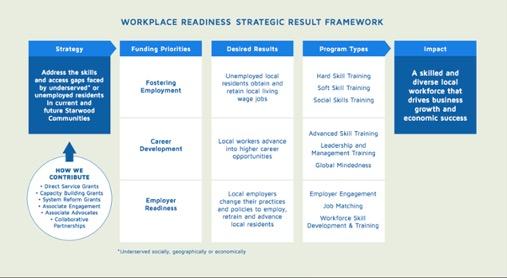Three Steps to Effectively Measure Philanthropic Impact
By: Burt Cummings, CEO
According to The Council on Foundations (COF) Report, Increasing Impact & Enhancing Value, corporate philanthropy is as vital as ever to business and society. And yet corporate leaders are under increasing pressure to connect the value of their programs with performance drivers that matter in the business. They must demonstrate that their philanthropic investment is both effective and aligned with business outcomes. Quantifying results is not always easy and many leaders struggle to measure the social impact of their programs. While they’ve often identified broad focus areas for their program, they can find it difficult to create clear social impact metrics that can bridge their philanthropic outcomes to their business strategy.
There are no universally accepted metrics for measuring either the social impact of philanthropy or the Return On Investment (ROI) of philanthropic initiatives. Each company is unique in both their social impact goals and in their requirements for how to demonstrate the ROI. It can be difficult to translate the large-scale vision of what they hope to achieve into tangible success measures. They struggle to find effective ways to track changes in behavior or condition for the nonprofits and community members they serve.
Versaic client Starwood Hotels & Resorts is an example of an organization committed to investing the time and resources necessary to put a corporate philanthropy program in place that delivers significant value to the community as well as to the company and its employees. Starwood worked with Versaic and The Rensselaerville Institute (TRI) to develop a results-focused approach and implementation plan for their corporate philanthropy initiatives. Starwood’s primary objective was to employ new tools that would automate the process and improve their ability to track, quantify and evaluate impact. Their system is now live, and as a result, their philanthropy team has freed up time and gathered better data so they can have more productive interactions with grantees and effectively measure the results of their programs .
Here are some of the key things we learned about how to design and implement a successful program from our journey with Starwood and TRI:
1) Create a strategic focus area(s): To identify focus areas that would address the most pertinent needs of the community while capitalizing on Starwood’s strengths, the Social Responsibility team looked internally for guidance. After multiple stakeholder interviews, focus groups and strategy sessions evaluating different aspects of the business, the team identified five focus areas that align community development objectives with Starwood’s strategic goals:
- Workplace Readiness
- Community Vitality
- Conservation
- Disaster Relief
- Human Rights
2) Formulate a Plan: With the focus areas in place, Starwood developed a framework to plan and assess the effectiveness of their giving. TRI helped Starwood shift its mindset from acting as a ‘funder’ to acting as an ‘investor’ in order to seek the highest human gain for the available dollars. With that perspective, the foundation staff created a strategic results framework to clarify goals for their signature program grants.
Here are some basic questions to ask when establishing a result framework:
- What changes do we want to see for the people or places we want to support?
- What are the predictive changes in behavior or condition that indicate those people and places are on their way to success?
- What types of programs and services will we invest in to get the end result?
- What type of investments will we make to affect the change we seek? Will our portfolio include programmatic, capacity building and systemic change grants?
3) Design an Effective System: For Starwood it was essential to make their team and systems as streamlined and efficient as possible. They knew they needed to automate the process, and wanted an automation partner who could integrate their results framework throughout the system workflow. They needed a system flexible enough to track the specific outcome data points they required.
Starwood’s application process and communication system process addresses the following needs:
- Educate grantees on the company’s philanthropic objectives
- Clearly communicate their criteria for support
- Help potential partners understand how they can engage with the organization.
- Collect all relevant information required to make funding decisions
- Collect necessary data to assess ROI and support impact reporting
By taking the time up front to design the right questions, Starwood now collects all the necessary information from charitable partners, from initial proposal through impact data collected post-grant. As a result, the team can demonstrate how their investments in local non-profits focused on building employments skills have resulted in a much better pool of potential employees. This is a clear win for Starwood and for the communities where they do business.
Conclusion:
If you’re daunted by the prospect of putting an impact-focused program in place, start by asking yourself, your team and your stakeholders questions about what you want to accomplish in your business and community. Use those answers and the three steps outlined above to develop a process that will deliver the results you want to accomplish. Be prepared to adapt as you go because even with the best plan in place your programs will continually evolve, just as the needs of your business and community change. Connecting and reporting social impact with ROI requires refinement as you learn from experience.
When you take this approach, you’ll respond more effectively to the needs of your community partners, your stakeholders and your social investing team while at the same time increase your impact. It certainly worked for Starwood. Read the full story of Starwood’s journey, Going From Strategy to Impact to learn more.



